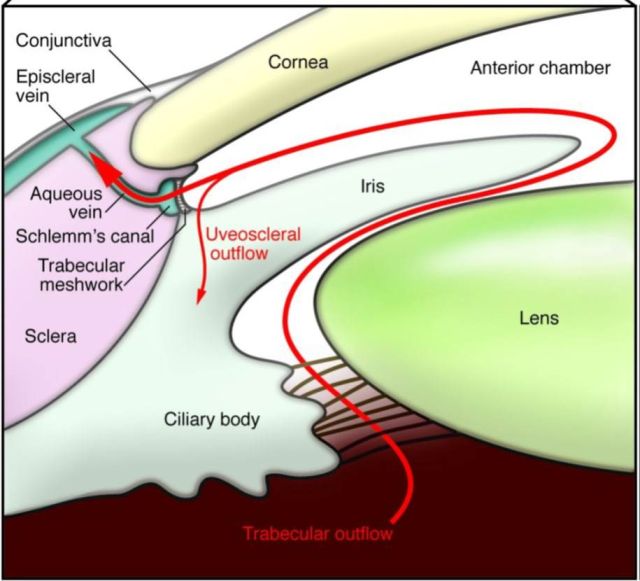Researchers testing a glaucoma therapy based on engineered stem cells
Posted: Fri Jun 17, 2016 4:25 pm
ArsTechnica


My pressures were up last time I went to get my eyes checked, my pressures were up... hopefully this works by the time I need it!Your eye may seem like a fairly static object, but it actually has an elaborate plumbing system. Tissues inside it constantly produce fluid (termed "aqueous humor") that then has to be drained to keep things in balance.
Like our man-made plumbing systems, the ones in our eyes can get backed up. When more fluid is produced than can be drained, pressure can build up in the eye, producing a condition called glaucoma. Over time, this can cause damage to sensitive eye tissue. Of the 60 million people around the globe thought to suffer from glaucoma, 7 million are blind as a result.
There are drugs and surgical means of reducing the pressure within the eye, but none is consistently effective. Now, some researchers in Iowa have found what might be an alternative approach: get the eye to repair the drainage system. They key to doing this? Stem cells.
Draining the eye is done via what's called the trabecular meshwork, an area of tubules near the iris. This meshwork is constantly remodeled and cleared of debris throughout life, although the cells that help maintain it are slowly lost as we age. In at least some glaucoma patients, subtle defects in the meshwork may contribute to the disease. To study this further, the researchers behind the new work have engineered a mouse strain to carry a mutation that's associated with glaucoma.
They started with a simple hypothesis: if the cells that maintain the mesh are lost with age, then it might be possible to restore the cells and improve the drainage in the eyes of these mice. So, the researchers figured out a way to convert stem cells to something that looks a lot like one of these mesh-maintaining cells. For the work here, they used induced stem cells, which can be made from the cells of the same mouse that's later treated using them, avoiding immune complications.
Using induced stem cells doesn't avoid all complications, though. The authors tested what would happen if they simply pushed the stem cells to become mesh maintainers and then implanted them in the eyes of mice. It turned out there were still some stem cells present in this mix, and they continued to proliferate after implantation. As a result, seven percent of the mice treated this way developed tumors.
To avoid this problem, the authors went through four repeats of a purification process that left nothing but mature cells in the final mix. None of the mice treated with these purified cells developed tumors.
The new cells integrated into the eye's drainage meshwork and survived for at least 12 weeks after the procedure. Untreated mice carrying the glaucoma-inducing mutation ended up with fewer cells in the meshwork and increased pressure inside their eyes. But those mice that received stem cells ended up with more cells in their meshwork, and their eye pressure remained stable as they aged.
The unexpected thing was that many of the additional cells in the meshwork weren't derived from stem cells. Instead, the presence of the stem cells appears to induce the native cells that were already there to start proliferating again. It's not clear how this takes place. Stem cells also ended up in other tissues within the eye, but they didn't seem to cause any problems there.
In terms of the overall state of glaucoma treatments, the use of stem cells is a long way off. We don't really seem to have a strong sense of how many cases of the disorder actually involve problems with the trabecular meshwork, so it's not clear how many patients this treatment would be relevant to. And we'd definitely want to know more about the fate of the stem cells that end up elsewhere in the eye before trying this. We'd also probably want to pin down how exactly these stem cells are able to remobilize the cells already present in the eye.
Still, despite its limitations, the work provides a nice perspective on the current state of work with stem cells. By at least some measures, the work is succeeding, and there are definitely indications that stem cells are just as promising as many had hoped they would be. But in most cases, we still have years of hard work before we can feel confident in the safety and efficacy of any one treatment. Confident enough to try it in humans, that is.